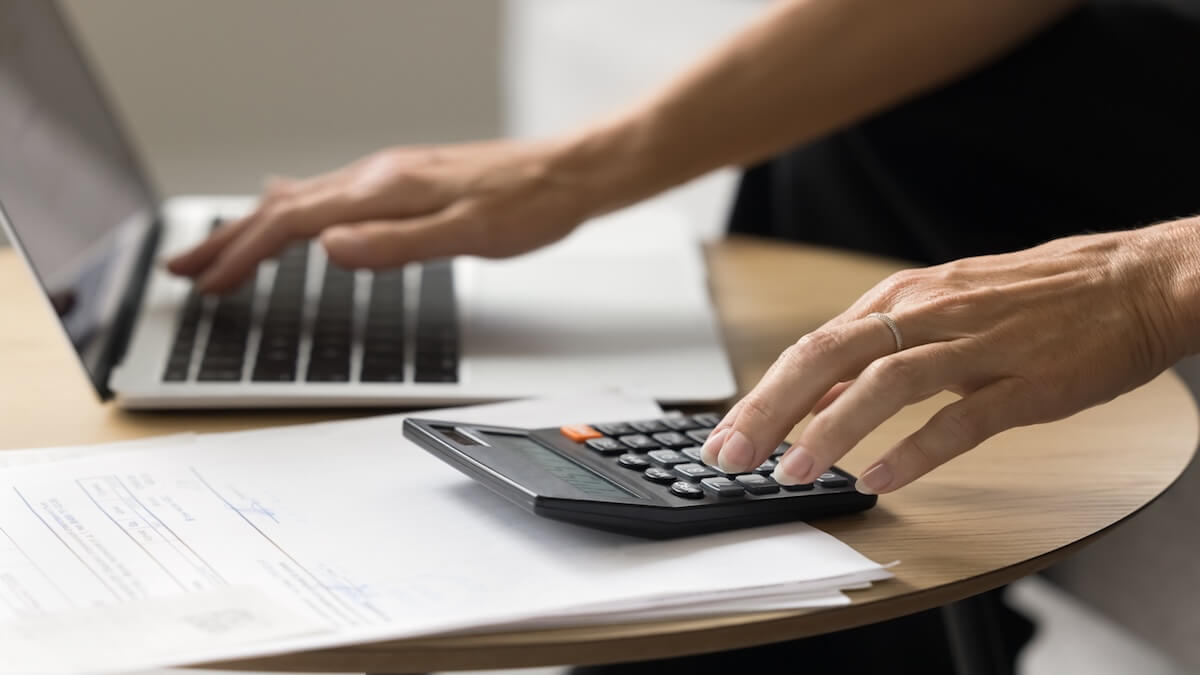How to get mortgage for overseas property as an American
Learn all about different ways to get an overseas property mortgage as an American and gain unique insights to prepare yourself for the whole process.

Property investment can generate passive income through rent payments, but how do you know if a property will be profitable? You need a way to measure whether the rent you'll collect justifies the purchase price.
Rental yield gives you a clearer picture of your potential ROI. This percentage tells you how much rental income you can expect to earn compared to the property's market value. In this article, we'll tell you how to calculate it so you can make smarter investment decisions.
We'll also introduce Wise — your international money transfer alternative. Use Wise to send stress-free transfers to over 140 countries - all at the standard mid-market exchange rate.
Rental yield is the annual rental income from a property, expressed as a percentage of the property's value or purchase price. It shows you how much money your property generates relative to what it costs.
There are 2 types of rental yield: gross and net.
- Gross rental yield is your total annual rent divided by the property value (not including expenses)
- Net rental yield is more accurate because it accounts for all of the costs of owning and maintaining the property
| When calculating net rental yield, you'll subtract expenses like property management fees, insurance, maintenance costs, property taxes, and repairs from your rental income. This gives you a more complete picture of how much money your rental property will make you. |
|---|
Rental yield helps you compare different investment properties and figure out which ones come with the best potential returns. A higher yield typically means better cash flow and a stronger investment opportunity.
However, rental yield isn't the only important consideration when looking at different properties. You should also think about how hard it'll be to find tenants and capital growth potential (if the value of the property will increase and by how much).
Also, it’s important to remember that rental yield is an estimation. Real life rarely has super clear-cut numbers, and your expenses can go up and down each month, just like your rental income might fluctuate.
Once you own the property, keep track of your average rental yield over the years to get a more accurate picture of your ROI.
You'll need to use 2 different formulas for your gross and net rental yield calculations.
Gross rental yield is a straightforward calculation. Take your annual rental income and divide it by the property's value, then multiply by 100 to get a percentage.
| Formula: (Annual rental income ÷ Property value) × 100 = Gross rental yield |
|---|
For example, let's say you buy a property for 400,000 USD and rent it for 1,800 USD per month. Your annual rental income is 21,600 USD (1,800 USD × 12). Your gross rental yield is 5.4% (21,600 USD ÷ 400,000 USD × 100).
This percentage shows you the return on your property investment before considering any costs. It doesn't account for expenses like maintenance, insurance, or property management fees, which is why you also need to calculate your net rental yield.
Net rental yield subtracts your property expenses from the rental income before calculating the percentage. This gives you a more accurate picture of your ROI, since maintaining virtually any property comes with costs.
| Formula: (Annual rental income - Annual expenses) ÷ Property value × 100 = Net rental yield |
|---|
For example, you buy a property for 400,000 USD and collect 21,600 USD in annual rent, but you have 3,600 USD in yearly expenses. Your net rental income is 18,000 USD. Your net rental yield is 4.5% (18,000 USD ÷ 400,000 USD × 100).
Common expenses that affect your net rental yield include property management fees, insurance, HOA fees, maintenance and repairs, vacancy periods when the property sits empty, and marketing costs to find tenants. There may be other costs depending on your specific property.
A good rental yield depends on your location and property type. In most US markets, 5% to 8% is generally considered a solid range.¹ If you're buying an international property, make sure to research what's typical for that specific city or country.
Be wary of rental yields that are too low OR too high.
Rental yields that are too low might not cover your expenses or provide meaningful returns. Yields that are too high look appealing at first, but often signal deeper problems like economic instability or properties in poor condition that will require high maintenance costs.
Your rental yield depends on many different factors, including local rental demand, property prices in the area, and maintenance costs.
In some countries, rental yields are more seasonal. Vacation properties can generate higher income during peak tourist months and sit empty during off-seasons.
Certain property types also require more maintenance. For example, beachfront properties often need extensive upkeep because salt air and humidity cause faster deterioration of building materials and exterior surfaces.
Here are some high rental yield global locations.
| Location | Average rental yield² |
|---|---|
| Cleveland, OH, United States | 23.9% |
| Pretoria, South Africa | 10.6% |
| Guatemala City, Guatemala | 9.9% |
| Riyadh, Saudi Arabia | 9.9% |
| Panama City, Panama | 9.8% |
| Santo Domingo, Dominican Republic | 9.6% |
| Astana, Kazakhstan | 9.3% |
| Ankara, Turkey | 8.7% |
| Calgary, Canada | 8.6% |
| Belfast, UK | 8.1% |
You can find good rental yields in virtually any country. A lot depends on choosing the right property in the right location.
For example, a studio or 1-bedroom apartment in a vacation destination can deliver strong rental yields because these smaller units are easier to rent out to tourists and couples. At the same time, they're often relatively inexpensive to maintain compared to larger properties.
It's important to remember that rental yield calculations are ultimately just estimates.
While helpful, they're still just approximations based on current market conditions, not guaranteed returns. Your actual ROI will depend on many real-world factors that you can't always accurately predict.
Here's what to consider:
- Location and neighborhood trends: Areas with declining populations, rising crime rates, or economic downturns can hurt your rental income and property value over time
- Property condition and age: Older properties may offer higher yields initially, but require more frequent repairs and maintenance, eating into your profits
- Local rental regulations: Rent control laws, tenant protection rules, and short-term rental restrictions can limit your income potential and flexibility
- Market demand and vacancy rates: High vacancy rates mean longer periods without rental income, which is often the case with seasonal vacation properties
If you're working with a real estate agent who promises high rental yields, verify their claims independently.
Look up similar properties on Airbnb or rental websites to see actual rental rates and availability. Or, even better, connect directly with property owners in the areas you're considering to get insights into real vacancy rates, seasonal fluctuations, and expenses.
Rental yield helps you measure your property's investment returns.
Gross rental yield gives you a quick snapshot by dividing annual rent by property value, which is often helpful to get a general idea of how much income you can make.
However, a net rental yield paints a more accurate picture because it accounts for expenses like HOA fees and maintenance.
Now that you can stop Googling "how is yield calculated on a rental property," it's time to figure out how you're going to transfer the money to pay for the property.
Especially if you're buying a property in a different country, bank transfers often come with high fees and currency exchange markups. So, it’s a smart move to investigate other ways of sending money overseas.
With Wise, you can send secure and trackable large amount transfers to 140+ countries worldwide with transparent fees and the fair mid-market exchange rate.
Have a look at the main benefits for using Wise to send large transfers:
Sources
Sources checked 07/02/2025*Please see terms of use and product availability for your region or visit Wise fees and pricing for the most up to date pricing and fee information.
This publication is provided for general information purposes and does not constitute legal, tax or other professional advice from Wise Payments Limited or its subsidiaries and its affiliates, and it is not intended as a substitute for obtaining advice from a financial advisor or any other professional.
We make no representations, warranties or guarantees, whether expressed or implied, that the content in the publication is accurate, complete or up to date.

Learn all about different ways to get an overseas property mortgage as an American and gain unique insights to prepare yourself for the whole process.

Get a full overview of the best property management software systems for small landlords to easily track and manage their overseas property.

How to buy your first rental property overseas? Here's a detailed guide that can help you understand the challenges and steps for making an investment.

What are the best property management software systems for managing student housing? Take a look at our list and choose the most suitable option for you.

Have a look at the in-depth guide on the Singapore rental yield market and get a detailed breakdown of opportunities in different areas within the country.

What is a good rental yield in the UK for international property investors? Here's a detailed breakdown of different regions and areas within the country.